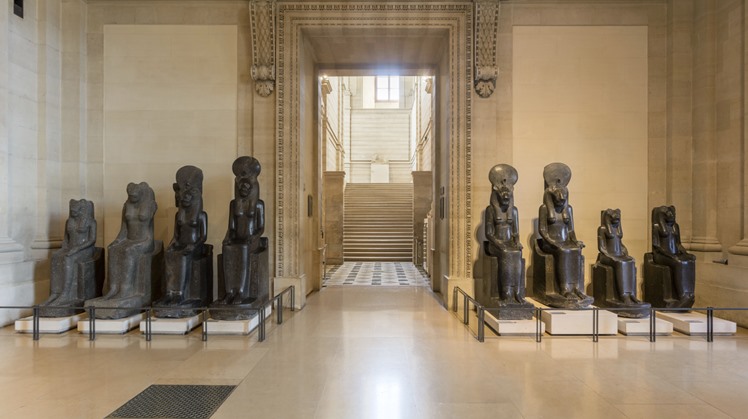On this day, August 10, 1793 AD, the Louvre Museum was inaugurated in the French capital, Paris, a year after the French Revolution stormed it. On a large group of Egyptian antiquities, which exceed 50,000 pieces, when was this large pavilion opened?
The establishment of a special pavilion for Egyptian antiquities began on May 15, 1826, when Charles X issued a royal order to establish the “Egyptian Pavilion” in the Louvre Museum, and Jean-François Champollion was appointed as its general secretary.
The beginning was the collection of artifacts during the French campaign on Egypt led by Napoleon Bonaparte (1798-1801), where they collected a number of Egyptian antiquities, including the Rosetta Stone, which the campaign found in Egypt, but after collecting a large number of pieces and on their way to Paris, they fell in The hand of their English enemies after a crushing military defeat, and those relics moved to England, to be the establishment of a large wing in the British Museum in "London".
But then Charles X decided a royal order to establish the Egyptian pavilion, in the Louvre Museum, and the first treasures to be placed in the pavilion, from a friend of Napoleon, Dominique Vivain, who was appointed director after that of the museum, and the number of pieces continued to increase through acquisitions made by Auguste Mariette Mariette, founder of the Egyptian Museum in Cairo, returned, after excavating in Memphis, boxes of archaeological finds, including the seated scribe.
The artifacts in the Egyptian wing of the Louvre Museum in Paris, which is a wing that witnesses a large number of visitors, includes artifacts dating back 4000 BC to the fourth century AD. The collection is, among the largest in the world, an overview of Egyptian life in ancient Egypt, the Middle Kingdom, the New Kingdom of Egypt, Coptic art, Egypt (a Roman province), the Ptolemaic Kingdom, and the Byzantine Empire.
The show in the Louvre is divided into halls that display topics specific to Egyptian civilization, namely: the Nile, writing, crafts and industries, furniture, clothing and decorations, music and games, the temple, animals and gods.
The Louvre Museum is the most important art museum in the world, which is located on the northern bank of the River Seine in Paris, the capital of France. On it, to turn later into a royal palace known at the time as the Louvre Palace inhabited by the kings of France.
 Thu, Aug. 11, 2022
Thu, Aug. 11, 2022